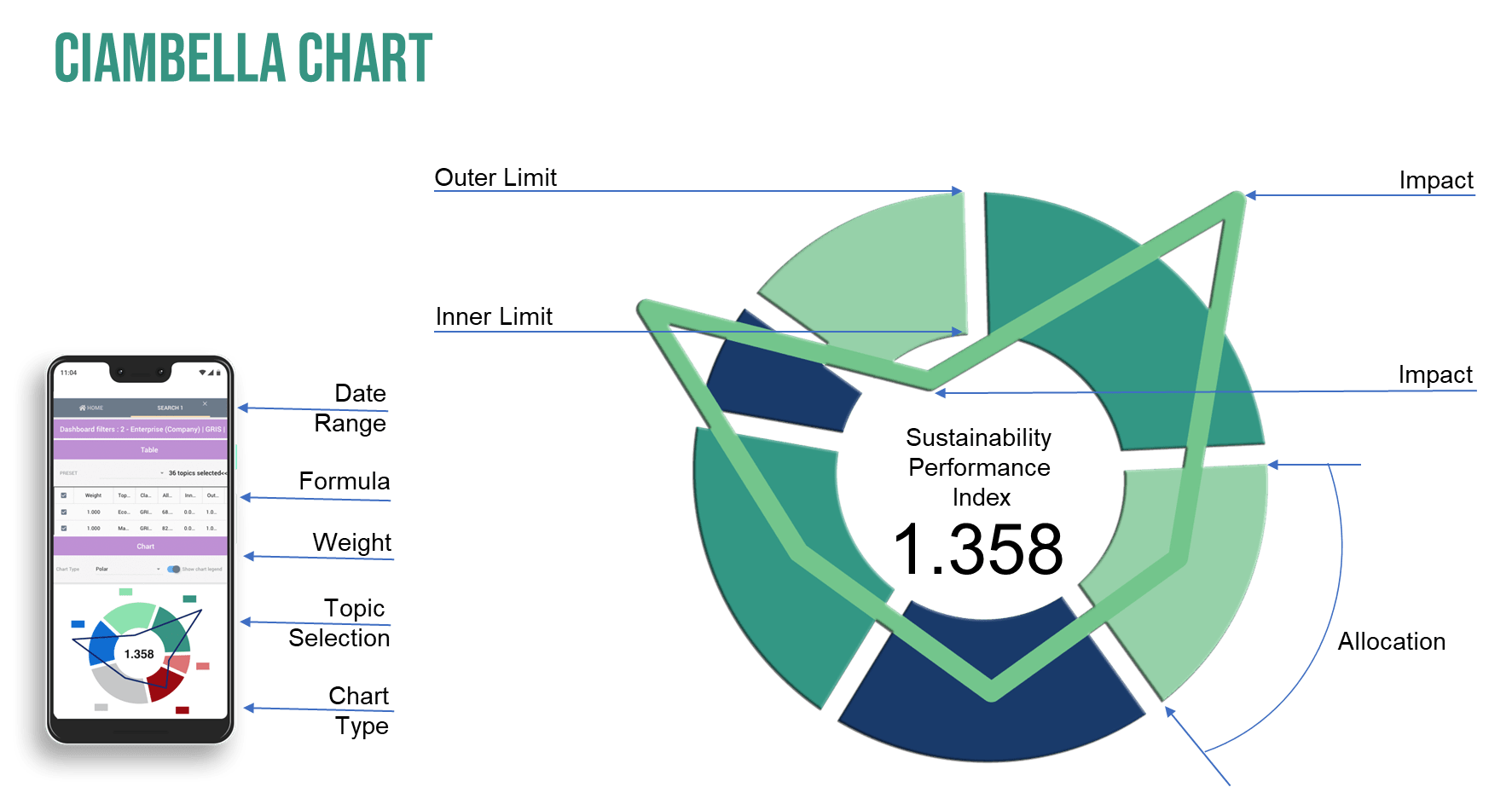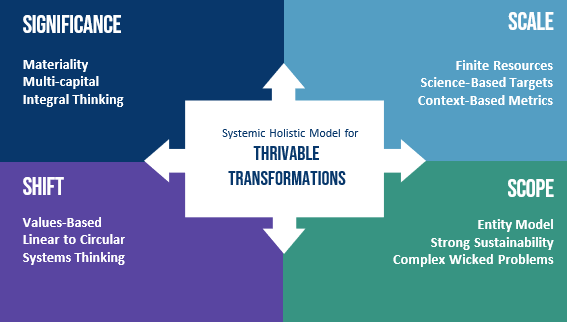The Thresholds of Transformation report was released by the United Nations Research Institute for Social Development (UNRISD) in July 2022. This report presents the results of a pilot test project on a set of Sustainable Development Performance Indicators (SDPIs) developed by UNRISD. The SDPIs are novel indicators that assess sustainability impacts by comparing them to context-based thresholds. In turn, the indicators are only meaningful when the boundaries of acceptable practice in different contexts are identified. Context-based measures are a fundamental aspect of the THRIVE Framework at the THRIVE Project. Additionally, The report’s findings suggest that economic entities require and welcome context-based thresholds. Standard setters and framework providers are encouraged to incorporate them to gauge the future of thrivability
Who is the UNRISD?
UNRISD is a research institute categorised under the United Nations. Additionally, it offers policymakers evidence, analysis, and strategies to combat poverty, inequity, and unsustainable practices. Concurrently, some of its previous research works include “Mapping Just Transitions to a Low-Carbon World,” which emphasises the significance of social sustainability in achieving low-carbon targets, including “Human Well-being and Capabilities“, a scientific article that addresses SDGs 1, 3, 4, 5, 16, and 17. UNRISD has contributed to many research projects, working papers, and reports.
What are Sustainable Development Performance Indicators?
“Sustainable Development Performance Indicators (SDPI) are intended to gauge whether economic entities are on a pathway consistent with the transformative goals and vision of the 2030 Agenda for Sustainable Development. Conversely, the SDPIs transcend existing indicators by assessing actual sustainability impacts against normative, context-based thresholds and transformative change potential”.
UNRISD
The project used to create these indicators was launched in 2018, in response to increasing awareness of unsustainable, industrialising, economic activities. This project, specifically relating to SDPs, is in an effort to fill gaps regarding the current set of Sustainable Development Goals (SDGs), set out by the United Nations in 2015.
SDPIs are measured through the sustainability quotient:
- S=A/N
- S: sustainability performance
- A: actual impacts
- N: normative impacts
The example given by UNRISD is:
In the case of SDG Indicator 6.4.2, “freshwater withdrawal” is the Actual Impact, and “available freshwater resources” is the Normative, with the “proportion” being the Quotient. Evidently, sustainable use of water would be “freshwater withdrawals” that respect the threshold of “available freshwater resources” at the watershed level. So, a sustainability quotient above 1 is unsustainable.
There are three tiers to the SDPI:
- Tier 1: Incrementalist Numeration: These are the actual impacts, i.e., the measurement of what’s actually happening, such as the amount of GHG emissions. They can also be “intensity” indicators that describe performance, relative to a nonnormative counterpart- GHG emissions per unit of production.
- Tier 2: Contextualised Denomination: Denomination indicators are context-based. They are the normative impacts (or impacts at the threshold of what environments can sustain). Similarly regarded in the THRIVE Framework, these context-based indicators account for ecological, economic, and social sustainability. They may be adapted to different entities based on local conditions.
- Tier 3: Activating Transformation: The third tier of the SDPIs accounts for changes within complex, adaptive systems by adding trans-contextual elements of implementation practices. Transcontextual elements refer to “outside of context” while using a bottom-up approach.
UNRISD: Exploring the Report
The Thresholds of Transformation Report presents the results of a pilot testing project that implemented SDPIs. These indicators not only use context-based thresholds, but also assess sustainability impacts against transformative change potential. Transformative change potential refers to a bottom-up approach that goes beyond the context. These new indicators can replace obsolete previous indicators that singularly measure impacts relative to previous years (Utting & O’Neill, 2020), which do not necessarily reflect actual sustainability.
The report categorises the results into quantitative and qualitative aspects. In terms of quantitative results, three perspectives are considered:
- The amount of data shared by participants on the indicator (heatmap scorecards),
- The extent to which the indicators can determine sustainability based on relevant data (hard context performance scorecards),
- Whether participants found the indicators relevant to their business models.
Accordingly, participants may face obstacles in sharing all the data required, which may affect the results. Qualitative results were obtained through a questionnaire, office hours, and interviews. This assessed the value of the process for the pilot test and the indicators. The categories considered include the value of indicators, elevating context, the scope of indicators, indicator true value, missing indicators, indicator feedback, and technical problems.
Furthermore, the pilot test of the UNRISD Sustainable Development Performance Indicators has demonstrated the feasibility of using indicators that evaluate performance against sustainability thresholds and transformation.
THRIVE FRAMEWORK AND SHM
The THRIVE Framework is a trans-disciplinary, holistic model, used to analyse issues (usually relating to sustainability and Sustainable Development Goals) and explore sustainable solutions.
The THRIVE project aims to demonstrate a “thrivable” zone using a Ciambella Chart and a systemic holistic model including 12 foundational focus factors.
The Ciambella Chart outlines a “thrivable zone,” using a minimum, (the social floor), and a maximum, (the environmental ceiling). Subsequently, the social floor details the least possible required for today’s societies in first-world countries. The environmental ceiling details the maximum damage done to the environment before it becomes unsustainable.

Source: THRIVE Framework
The Systemic Holistic Model consists of 12 Foundational Focus Factors, determined in a Delphi study as sufficient and necessary to achieve thrivability. The 12 FFF are conveniently categorised into:
- Significance
- Shift
- Scale
- Scope
Significance
Significance considers what is material, across all capitals, and is measured in an integrated way. The FFF in this category includes materiality, multi-capital, and integrated reporting. Materiality defines the material impacts of economic, environmental, social, and governance issues on stakeholders. Multi-capital considers financial, plant and equipment, intellectual property, human capital, social relationships with community and primary stakeholders, and renewable and non-renewable natural environmental resources. Integral Thinking measures the value created by combining strategy, governance, performance, and prospects to reflect the profit-making, social, and environmental context within which one’s organisation operates.
Scale
Scale considers finite resources and impact from a science-based, and context-based approach. Finite resources optimise the fact that resources are limited and expand on why it’s important to measure how much is being used in relation to how much exists. Science-based explains that all of our work is evidence-based, following the best available scientific knowledge and methodologies. Context-based considers factual, practical data gathered from local, regional, cultural, and other non-theoretical standpoints.
Scope
Scope considers the complex wicked nature of the problem being examined from a strong, sustainable perspective, based on the entity being examined. Boundary/Entity selects the trajectory of change by having a clear, concise understanding of the relevant limits and exclusions. Strong Sustainability emphasises transformations that protect, maintain, or enhance natural resources. Complex Wicked Problems focuses fearlessly on problems or symptoms with multiple clear or hidden causes that are also difficult or impossible to solve. Fine-tuning solutions is part of the process, as some problems are apt to worsen as solutions are harnessed.
Shift
Shift considers a values-based, innovative path, employing a trans-disciplinary approach, shifting from traditional linear to circular economies. Values-Based encompasses the “thrivable zone” which is based on our core values: a shift from an economical approach to creating products or services in consideration with a moral and ethical responsibility to maximise economic, ecological, and social impacts. Linear to Circular focuses on changing behavioural patterns to reuse materials and reduce waste. Additionally, there is a shift from traditionally linear (take, make, waste) to circular (reduce, reuse, recycle) economic concepts. Trans-Disciplinary factors in the different disciplines relate to the issue and collaborate with people from all relevant specialties to achieve universal goals.

Source: The Systemic Holistic Model
How does THRIVE contribute?
Furthermore, at the centre of the THRIVE Project is the THRIVE Framework. It is a trans-disciplinary, holistic model that analyses issues (usually relating to sustainability and Sustainable Development Goals) and explores sustainable solutions. The THRIVE Framework demonstrates a “thrivable” zone using a Ciambella Chart that outlines a “thrivable zone” using a minimum, the social floor, and a maximum, the environmental ceiling. Additionally, the social floor details the least possible required for today’s societies in first-world countries. The environmental ceiling details the maximum damage done to the environment before it becomes unsustainable.























